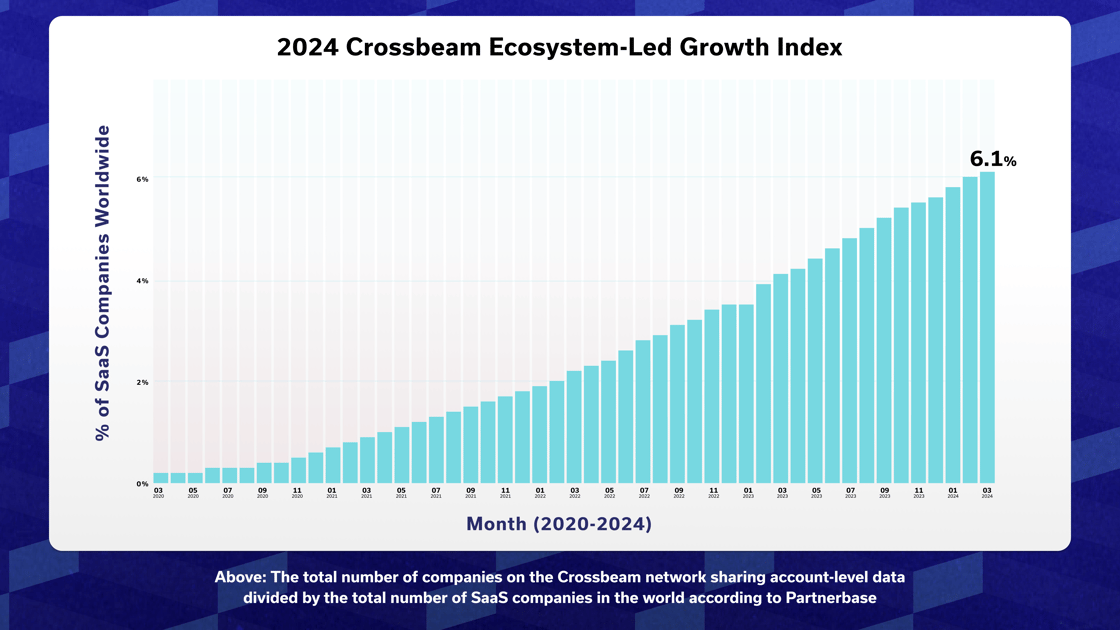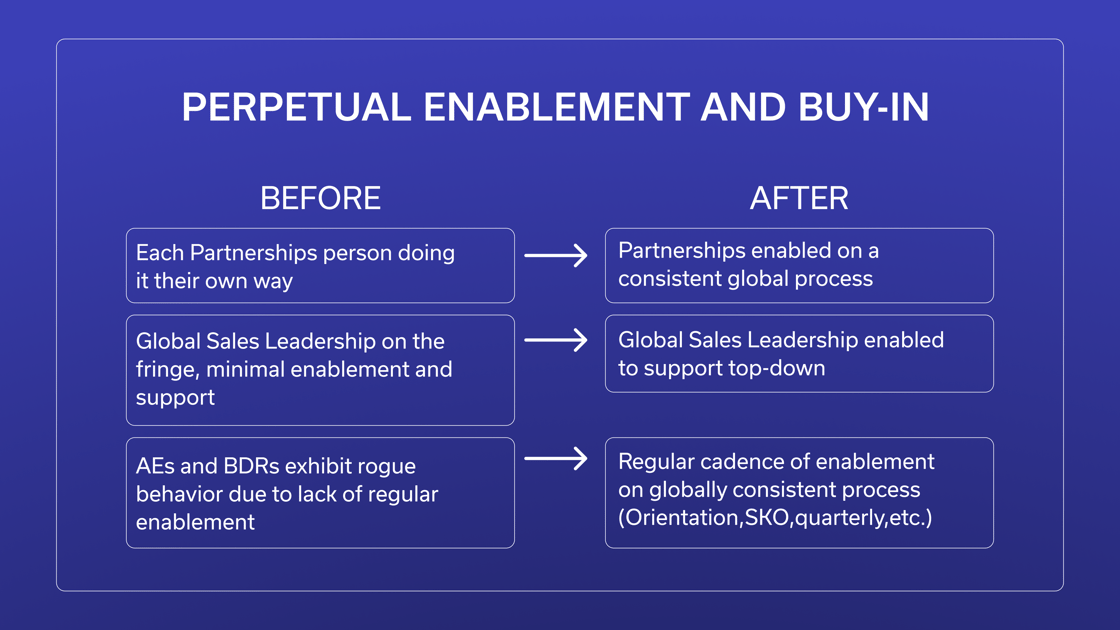The Nearbound Daily is now officially the ELG Insider Daily!
Welcome to the
ELG Insider Daily—the #1 newsletter in the world keeping thousands of GTM professionals on top of the latest Ecosystem-Led principles, tactics, and trends.
Join the movement here.
PRINCIPLES
Ecosystem-Led Growth takes a village
A core principle of successful Ecosystem-Led Growth is that partnership teams are essential, but they’re not enough.
Even as revenue leaders are
quickly adopting ELG as the most promising new go-to-market motion, it can’t reach full power unless every revenue function is aligned on using ecosystem data and insights to achieve growth goals.
Fortunately, cross-functional collaboration in B2B SaaS companies is generally a simple undertaking with minimal friction. Just kidding!
Alignment around goals and execution requires thoughtful planning, management, and frequent, open communication. But it’s well worth it when everything comes together and the numbers go up.
For teams struggling to align GTM teams around ELG implementation, many problems and their solutions come down to the company’s approach to:
- Collective goals
- Financial incentives and compensation
- The example set by leadership
- Enablement
To learn more about how a cross-functional group of GTM leaders worked together to envision a bright ELG future,
read this story
on ELG Insider.
TACTICS
Your ELG buy-in playbook
Getting buy-in for a new strategy, tool, or anything that requires an investment of time and resources is often a catch-22:
You need to demonstrate value to get buy-in, but you need buy-in to get the resources to demonstrate the value.
This is particularly true for something like Ecosystem-Led Growth, which relies on different kinds of internal and external collaboration than traditional approaches to revenue growth.
ELG is a powerhouse when sales, partnerships, customer success, marketing, and other GTM stakeholders engage in and support the process — so how can an ELG champion make that happen effectively and efficiently?
Here are buy-in plays that have worked for companies that have had big success with
ELG as a core go-to-market strategy.
The FOMO play
“Do what other companies are doing” isn’t generally great advice, since what works for one business and its customers may very well not work for another (and who’s to say they have it all figured out anyway?). But it’s hard to ignore the consistently growing adoption of a core strategy by companies of all sizes, shapes, and industries.
When it comes to ELG, this growth isn’t just anecdotal. Every year, Crossbeam publishes the Ecosystem-Led Growth Index, a way to measure the penetration of ELG in tech services and companies.

ELG adoption is growing month-over-month and year-over-year as companies and their partners harness key data and work together to drive revenue. If your organization wants its boat to catch that rising tide, it’s time to take a serious look at the power of your ecosystem.
The always-be-enabling play
Let’s say you’ve started using ELG on a small scale with a few partners and reps, but you know it won’t reach its full potential without enthusiasm across both internal and external teams. You’ve created presentations and Slack posts and emails to get people on board, but it’s slow going because people are already so busy with their current strategies.
This is when it’s time to take them to school.
For example, leading customer engagement platform
Braze
is an ELG machine thanks in part to providing sales teams with constant ecosystem data and enablement.
Braze has built an ELG strategy around their
ELG Sales Tetrahedron, a framework that relies on a chain reaction between tooling, data, and buy-in.
And this isn’t just the responsibility of the partnerships team — it becomes part of the regular cadence of business in pipeline reviews, sales training sessions, SKOs, new employee onboarding, and more.

The impact has been immense. Braze has seen that leveraging partners has resulted in a higher deal close rate, larger average deal size, and a powerful source of new pipeline generation.
The smarter attribution play
Getting leadership buy-in would be simple if it were a straightforward process to report the exact total of ecosystem-driven revenue. But as partnerships become responsible for more and more revenue, the challenges of measuring and attributing that revenue endure.
“How much pipeline does partnerships bring? How much do they source? How much do they influence? Everyone wants to know that, but it's such a nebulous number,” says Don
Otvos,
LeanData’s VP of Business Development and Alliances. “The partnership team is responsible for 15% of revenue, but that number is all over the place depending on when you run the report.”
Don decided that his team needed a more reliable and measurable KPI to reflect their contribution. He set up the tooling to measure the median value of deals in each business segment and set his team’s goal for that segment at 15% of the median. He then looked at how many deals it took on average to reach that dollar amount.
Instead of trying to hit that number in actual dollars, which was nearly impossible to measure at any point in time, he proposed setting a threshold for the number of deals that had to get past a certain stage to roughly equal 15%.
“I want to be directionally correct on getting to that 15% number — I don't care about hitting it, per se, I just want to know that the partner team is heading in that direction.
To do that, I’m going to look at the number of deals that get past a certain stage rather than scrambling to track down every dollar for attribution. It becomes a much more objective number because you look at the date a deal reached a certain stage and you count it or you don’t.”
With this simplified attribution model, the role of a company’s ecosystem in sourcing and closing deals is much more clear cut, and that data doesn’t lie when it comes to making a case for ELG.
LIVE FROM LONDON
The Crossbeam x Reveal merger
If you missed the livestream of Bob Moore and Simon Bouchez going deep on the Crossbeam x Reveal merger at ELG Con London, you can watch it right
now on demand.

Stuff you don't want to miss!
- July 17th — GTMnow live event: Crossbeam and Reveal are joining forces: the merger and what it means for go-to-market and ELG. Join GTMnow/GTMfund VP of Marketing Sophie Buonassisi in conversation with Crossbeam CEO Bob Moore and Reveal CEO/now Crossbeam COO Simon Bouchez about how the merger will shape the future of ecosystems.
Register here. - July 18th — Extend HubSpot with G2 and 6sense: How B2B SaaS Companies Can Leverage Account Based Strategies to Win—Tiphaine Amblard
(HubSpot),
Rachel Gianfredi
(G2),
Stephen Lackey
(SmartBug Media),
Jeff Wagner
(6sense), and
Jonathan Burg
(New Breed) how you can better leverage the G2 and 6sense integrations to optimize your ABM strategy.
Register here.
You're all caught up
See you tomorrow
If this email was forwarded to you,
sign up here to get the newsletter every week.




